The present article contains new information about the aircraft of the Pursuit Brigade and their paint schemes, gleaned from a series of unique photographs taken by Henryk Poddębski at Okęcie Airfield shortly before the outbreak of the Second World War.
For years I have been trying to find the answer to the following question: what was the physical appearance of Polish aircraft at the start of the Second World War?
More specifically, I was always intrigued by their paint schemes and markings at the time. Because of my place of birth and residence, I was most interested in the history of squadrons associated with the largest pre-war Polish aviation unit – the 1st Aviation Regiment, stationed at Okęcie Airfield(which in 1939 was located near Warsaw).
For a great many years we had at our disposal only limited photographic material from which to form a response to the question posed above. Because of the introduction of highly restrictive regulations governing military secrets in 1936, today there are relatively few photographs showing Polish military aircraft from the second half of the 1930s. Particularly rare are pictures from 1938 and 1939, while those that were taken by Poles immediately before war broke out and in September 1939 and at once comprehensively present aeroplane paint schemes and markings can be counted on the fingers of both hands.
The situation changed somewhat with the appearance of internet auction sites, which helped bring to light a relatively large number of photographs of Polish aircraft – many previously unknown – that had been made by German soldiers in September 1939. Although these images usually portray damaged aeroplanes or write-offs, they have allowed researchers to uncover a good many facts concerning the history of Polish aviation.
One of the conclusions that can be drawn from an analysis of these materials is that shortly before the War the police (underwing) numbers of the majority of Polish military aircraft were changed from two-digit to three-digit. But were these the only modifications?
The purchase by the Museum of the Second World War in Gdańsk in 2014 of a collection of more than 260 unique photographs devoted to the Polish Army, all of which had been taken by a pre-war Warsaw-based photographer, Henryk Poddębski, caused an immense stir, especially as these images have never been publicly available. Luckily for aviation enthusiasts, the set contains a dozen or so (unfortunately not more!) pictures of Polish military aeroplanes. Their value is all the greater since they are technically good and show the aircraft in their best possible mechanical condition, during preparations for a fly-past.
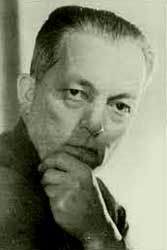 Henryk Poddębski (born on November 21, 1890, in Chrząstów, died 1945 in the German Concentration Camp in Veihingen near Stuttgart) – Polish photographer of sightseeing. Member of the Polish Touring Society. Secretary of the Photographic Commission of the Polish Touring Society.
Henryk Poddębski (born on November 21, 1890, in Chrząstów, died 1945 in the German Concentration Camp in Veihingen near Stuttgart) – Polish photographer of sightseeing. Member of the Polish Touring Society. Secretary of the Photographic Commission of the Polish Touring Society.
Poddębski specialised in documentaries, sightseeing and landscape photography. He was a pioneer of colour photography before World War II. After his death, a photographic archive with over 22,000 photographs was left behind. He photographed, among others, Polish Army equipment and aeroplanes.
Henryk Poddębski’s photographs are in the collections of such institutions like the National Digital Archives, the National Library in Warsaw, the Museum of the City of Gdynia, the Institute of Art of the Polish Academy of Sciences and the Museum of the Second World War.
Setting the scene of events
One of the first questions that needs to be answered when analysing Poddębski’s series of photographs concerns the date when they were taken. There is no doubt that the pictures were made at Okęcie Airport, which was the home base of the 1st Aviation Regiment. The vegetation and weather conditions would suggest that they were taken between May and August 1939. In my opinion, May would be the most logical date, for we can see that the aircraft are being readied for a fly-past commemorating the 148th anniversary of the Constitution of 3 May 1791.
The aeroplanes are shown standing on the section of Okęcie Airfield operated by the 1st Aviation Regiment. Two freshly mowed strips of grass are visible on the apron; these were used for take-offs and landings. PZL P.11a and P.11c fighters of 112, 113 and 114 Fighter Squadrons are predominant in the photographs, while those of 111 Fighter Squadron, which also formed part of the Fighter Group, are less clearly visible. The latter’s aircraft must have been situated to the rear of the group (a few P.11s with round emblems – probably from 111 Fighter Squadron – can just be discerned in the last row). As we can see, the PZL P.11s are freshly washed, and it seems that some of them are in the course of being repainted – this would be indicated by the fact that their checker-boards (Polish Air Force identification marks) and underwing numbers have been painted over, while they also lack operational markings, and some do not have their tactical numbers. In certain of the shots, a section of PZL.37 Łoś bombers is visible in the distant background.
Act one, scene one
Following this general description of the scene which Henryk Poddębski traversed, we will proceed to a more detailed analysis of a few of his photographs.
Photo from the collection of the Museum of the Second World War in Gdańsk, published under the license granted to Arma Hobby.
Looked at chronologically, this picture was probably taken first. Poddębski must have been walking along the front row of aircraft. The foreground is occupied by PZL P.11a “6” with registration number 7.47 from 112 Fighter Squadron. The emblem of 112 Fighter Squadron – the “fighting cock” – is excellently visible. It is worth noting that in Poddębski’s pictures, the aircraft of this squadron carry the older version of the symbol (see Winged Salamanders, Part 1 – the Emblem of 112 Fighter Squadron in 1939). The words “Polska Opona Lotnicza (Polish aircraft tyre) Stomil 750×150” can be made out on the tyre. Apart from the inscription, Stomil tyres had a unique logo of crossed flags, which is barely visible in the photograph.
Photo from the collection of the Museum of the Second World War in Gdańsk, published under the license granted to Arma Hobby.
The underneath of the aircraft’s wings is probably painted grey; the police numbers are in black, a capital “N” designating the 1st Aviation Regiment has been painted near the edge of the wing and the number “004” on the opposite side, while the underwing checker-boards have not yet been added. The barrel of the fuselage machine gun has been covered with a tarpaulin sheath, which would have provided protection against humidity and contamination. The tarpaulin sheath that usually covered the cockpit when the aircraft were on the ground has been slid down forward of the windscreen. The shape of the P.11a’s headrest pillow, completely different from that used in the “c” version, is clearly visible. The cover of the recess for the first-aid kit has not been painted with a red cross, while the aircraft weight data (normally present on the rudder) and the PZL logo (on the vertical stabilizer) are also missing. The checker-board on the rudder has been covered with primer in preparation for painting. Below the horizontal stabilizer is an instruction plate; this is painted in camouflage colour, as is the data plate on the Townend ring cover. The gun camera mount is located on the front left wing strut. A Polish Irvin parachute can be seen lying on the shaded grass under the fuselage.
The next aeroplane in the first row is PZL P.11c “1” from 112 Fighter Squadron, registration number 8.45; checker-boards without white squares and a black letter “N” are visible on the wing undersides. The aircraft is equipped with a night-flying lamp fitted above the headrest.
In the second row is a PZL P.11c with a white police number (“78”); this is “4” from 114 Fighter Squadron (the second aeroplane in the second row). As a matter of fact, we have given a more detailed presentation of this very aircraft on our blog, and it also adorns the box of the PZL P.11c model produced by Arma Hobby.
Photo from the collection of the Museum of the Second World War in Gdańsk, published under the license granted to Arma Hobby.
In the second row (at the height of the landing gear strut) we can make out PZL P.11c “1” from 114 Fighter Squadron; interestingly, the aeroplane, which was flown by the commander of 114 Fighter Squadron, has its entire headrest painted white (or perhaps blue or silver?).
Photo from the collection of the Museum of the Second World War in Gdańsk, published under the license granted to Arma Hobby.
The photographer moved towards the tail of number “6” from the preceding picture. In the foreground we can see the tail of PZL P.11a “6” from 112 Fighter Squadron, registration number 7.47. This is one of the best shots of the emblem of 112 Fighter Squadron in its original version.
Photo from the collection of the Museum of the Second World War in Gdańsk, published under the license granted to Arma Hobby.
The checker-board on the stabilizer has been primed in preparation for painting, while the absence of the PZL logo, operational markings and aircraft weight data (all have been painted over) is characteristic. At the ends of the vertical and horizontal stabilizers are oval plates with the monoplane’s serial number.
Next in line is PZL P.11c “1”, serial number 8.45, from 112 Fighter Squadron. A parachute has been placed on the wing strut. Behind it is the aircraft of the commander of 112 Fighter Squadron, F/L Opulski (identifiable by the diagonal stripe on the fuselage). In my opinion, however, it is probable that this could just as well be the marking of the commander of III/1 Flight, F/L Krasnodębski. The aircraft is equipped with a night-flying lamp fitted above the headrest. Checker-boards are visible on the wings, however no other markings can be discerned. The photograph provides an interesting view of a number of P.11 tails with checker-boards in different colour tones.
Act one, scene two
Henryk Poddębski walked along the first row of aircraft, passing number “1” with the emblem of 112 Fighter Squadron and the next P.11c in line, adorned with a diagonal stripe (probably the aeroplane of the commander of III/1 Flight).
Photo from the collection of the Museum of the Second World War in Gdańsk, published under the license granted to Arma Hobby.
In the foreground we can see a “numberless” PZL P.11c with registration number 8.65 from 112 Fighter Squadron. As a technical aside, it is worth noting that the ventilation holes of the engine are closed and that the aircraft is fitted with a night-flying lamp above the headrest, and also with bomb carriers (specifically the version which was installed closer to the wing struts), while the aerial mast on the stabilizer appears taller than normal. Also of note is the cover slid onto the windscreen, and the sheath enshrouding the barrel of the fuselage machine gun. The underneath of the aircraft’s wings is probably painted grey, with black police numbers – “32” or “132” (?). The letter “N” has been painted close to the edge of the wing, while the underwing checker-boards do not have white squares. There are traces of camouflage paint on the propeller near the spinner, and “P.11c” (the “c” is underlined) has been painted on the stabilizer. A Polish Irvin back-type parachute can be seen lying on the shaded grass under the fuselage. The next aeroplane in the row is PZL P.11a “10” from 112 Fighter Squadron, which we will take a closer look at later.
Looking beyond the foreground, towards the second row, we can see aircraft from 113 and 114 Fighter Squadrons; the one that is first on the right has underwing checker-boards (this aeroplane will be discussed further on). Next to it, on the left, is P.11c “10”, fitted with 4 machine guns; the cartridge case ejector spouts of the wing-mounted guns are clearly visible, as is the white letter “N”. The engine ventilation holes are open, and the gun camera mount can be seen on the rear left wing strut.
Photo from the collection of the Museum of the Second World War in Gdańsk, published under the license granted to Arma Hobby.
Further on, in the second row and to the left, we see mechanics setting up another P.11c. The next aircraft in this row, on the left of the picture, is a PZL P.11c from 113 Fighter Squadron. It has a light-coloured headrest, similarly to number “1” from 114 Fighter Squadron, but unfortunately its tactical number is obscured. On the underside of the wing is the white letter “N”, while the initial part of a painted stripe can be made out on the edge of the right wing. Standing next to it in the second row is a P.11c with the tactical number “8”, probably from 113 Fighter Squadron (?).
A third row of aircraft is visible in the background. Looking from the right, we can see a PZL P.11a (just behind the aeroplane with white and red checker-boards) with a white police number (“76”) from 114 Fighter Squadron, probably without checker-boards on the wing undersides. The next aircraft to the left in the same row is a PZL P.11a with a white letter “N” and without checker-boards. The squadron emblem is placed in a triangle; this aircraft is probably from 113 Fighter Squadron and does not have a tactical number
Act two, scene one
Photo from the collection of the Museum of the Second World War in Gdańsk, published under the license granted to Arma Hobby.
The photographer then proceeded to the second row of aeroplanes, taking a very atmospheric picture of mechanics from 113 Fighter Squadron passing by PZL P.11a “8”, military registration number 7.19. The day must have been hot, because the mechanics have taken off their dark blue overalls (at the time known colloquially as “mantles”), which can be seen lying on the grass under the wing. The mechanics are playing around with a trolley that was used to wheel aircraft (to this end it would be placed under the tail skid). An identical trolley is visible in the background, behind the aeroplane’s stabilizer.
The registration number and markings of this P.11a have been painted in black. The letter “a” appears to be lighter in colour, and is most likely red. It is highly probable that the shade of khaki used on this aircraft was of the old version, that is medium khaki. The question now arises: was the tactical number “8” painted in white? It appears somewhat dark; perhaps it was painted using silver steel paint. The emblem of 113 Fighter Squadron – an attacking eagle owl – is clearly visible.
Photo from the collection of the Museum of the Second World War in Gdańsk, published under the license granted to Arma Hobby.
This P.11a has the gun camera mount installed on the first strut, with the gun camera fitted. Most likely, the camera is covered with a protective sheath. Interestingly, a second gun camera mount has been installed on the rear strut – such a configuration was highly unusual! Both mounts are fairly lightly coloured (early khaki, perhaps?), while the mounts have been taken from an older type of aircraft, such as a P.7a.
The mirror handle can be seen on the left windscreen section. Below the windscreen is a small side window which improved visibility to the front and sides and was typical of the P.11a. In front of the window, just below the wing, is the rectangular plate of the Viet starter. A fragment of parachute harness, together with the clasp, can be seen sticking out of the cockpit. The underneath of the aircraft’s wings is probably painted grey. The painted white letter “N” is rather unusual, being narrower and shorter than normal. The underwing checker-boards have yet to be painted on (the old checker-boards can be seen showing through). The inspection hatch on the edge of the wing appears lightly coloured – maybe the sheet metal was not painted over following a repair? Some paint has chipped of from the end of the wing leading edge, near the letter “N”. The landing wheel disk, together with a double row of rivets and the tyre valve cover, is excellently visible on the left. The disk is smeared with grease, which was used to lubricate the wheel bearings.
In the background is a second row of aircraft, and the first on the right is P.11a “2”, police number 62-N, from 113 Fighter Squadron. Its underwing checker-boards are painted over, and a stripe has been painted on the upper part of the right wing. Position lights for night flying (sic!) are visible on the wing edges. It would seem that another position light has been fitted atop the vertical tail unit. The next aeroplane in line, to the left, is partially obscured by the tail unit of number “2”. This is a P.11a with a white police number, “80-N”, and checker-boards without white squares. Interestingly, the underside of the wing, with the letter “N” located close to the struts, appears to have been painted in a darker colour right up to the leading edge. A registration number, probably 7.49, has been painted in black on the fuselage, while the side number is 5 or 9 (?). The squadron emblem is partially obscured by a mechanic. The next aeroplane to the left in the same row is a P.11c with side number “6” from 113 Fighter Squadron. It has a white police number (66-N, visible in another photograph), while the underwing checker-boards cannot be discerned. The carriers are located closer to the struts, as was typical for the early production series. The registration number – perhaps 8 (32 or 23 or 28?) – can be made out only with difficulty.
Further back is the last row of P.11s. Rightmost is a P.11c that is also depicted in another photograph, where we can see that is has a black, three-digit police number under its wings, and that its underwing checker-boards have been painted over. The next aircraft in the row, on the left, can just be made out behind the head of a mechanic who is pulling a trolley; this is a P.11a from 113 Fighter Squadron with the side number “5”. No police number or checker-boards are visible under its wings. Further on to the left, behind the stabilizer of aeroplane 7.49, is a P.11c with a white letter “N” painted very close to the wing edge; it too does not have checker-boards. Proceeding leftwards, the next aircraft is a PZL P.11a with the number “10” on its fuselage; the squadron emblem has been obscured by a mechanic. A white letter “N” and a checker-board (probably painted over) can be made out on the underwing surface. Other photographs suggest that this is 40-N, most likely from 111 Fighter Squadron (perhaps the aircraft of the commander of the squadron or of III/1 Flight).
Act two, scene two
Photo from the collection of the Museum of the Second World War in Gdańsk, published under the license granted to Arma Hobby.
The photographer continued to walk along the second row of aircraft until he reached one that caught his attention due to the white and red checker-boards under its wings (freshly painted – until the turn of 1939, it was standard for P.11s and P.7s to have checker-boards without white squares). This is the sole P.11 fighter photographed by Poddębski that has visible white and red checker-boards on the underwing surfaces. The PZL P.11c in question is definitely from IV Flight, but is it from 113 or 114 Fighter Squadron? The colour applied to the undersides of the wings appears to be lighter than on the aircraft in the first row. The bomb carriers are fitted further away from the wing struts, and this would suggest that the fighter is from a late production series… but here, however, we cannot see the crutch levers of the bomb carries themselves! Interestingly, the leading edges of the propeller blades are visibly scratched. A parachute is lying on the ground in the shade of the left wing. The wheel chocks are of the new, metal type (previously, until around 1937, profiled wooden chocks were used).
Further back, in the third row (counting from the front), is a PZL P.11a with the underwing number “76-N”, probably from 114 Fighter Squadron. The pilot is sitting on the wheel of the aircraft. Of note are the strips of sheet metal at the point of connection of the wing and the struts, which have been painted in a dark colour, while the underwing checker-boards are painted over. To the right is PZL P.11c “66-N” from 113 Fighter Squadron, with its checker-boards also painted over. A stripe has been painted on the upper part of the leading edge of the right wing (with the number “66”), near the struts. A Polish Irvin parachute is lying on the undercarriage leg.
In the far right of the photograph we can see a wing with the police (underwing) number “80” (114 Fighter Squadron) clearly visible. Whereas in the extreme left of the picture there is a wing with the white letter “N”, most likely without a checker-board, while the shape of the vertical tail unit suggests that this is a PZL P.11a.
In the last row of “elevens” we can just make out an underwing number starting with “4X”, and this would mean that these aeroplanes are from 111 Fighter Squadron. Looking from the left, we can see an aircraft with the white marking “45-N” (or 46), and with the letter “N” painted near the edge of the wing, which would have been quite rare. The machine gun trough is located slightly higher, and this – together with the shape of the tail unit – would suggest that we are looking at a PZL P.11c. It is likely that the aircraft does not have checker-boards painted under its wings. The checker-board on the rudder reflects the sun strongly. To the right of the aeroplane is what looks to be a PZL P.11a, with its marking, “40-N”, painted in white.
Behind the arrangement of P.11s we can see 3 or 4 PZL.37 Łoś bombers, all with lightly-coloured bellies painted with silver camouflage paint and clearly visible red and white checker-boards, which contrast with the rather dark camouflage colour (probably late khaki) and shiny propellers. The engines of one of the bombers are being revved up. A “No. 2” marking is visible on the hanger behind the PZL.37s. Much further behind, and unfortunately barely visible, left of the line of PZL.37s, there is a PZL.23 Karaś reconnaissance aircraft, while further still to the left we can see a training and liaison aeroplane, an RWD-8 or a Bartel BM4h, with a number on the fuselage; to the left there is a Lublin R-XIII with light-coloured wings painted with silver steel paint on the undersides. These aircraft could have been from a training flight or even from another aviation regiment.
Act three, scene one
Photo from the collection of the Museum of the Second World War in Gdańsk, published under the license granted to Arma Hobby.
The photographer returned to the first row of the group. The aeroplanes in the foreground have their engines switched on, while those further on in the line have their’s turned off. Most of the mechanics, dressed in Navy blue overalls, have exited the cockpits, and we can see three pilots in light-coloured flight suits: one is walking towards his aeroplane with a parachute, another is already sitting in his cockpit, while the third is just entering the cockpit. Looking from the right, we can see P.11a “6” from 112 Fighter Squadron with registration number 7.47, P.11c “1” from 112 Fighter Squadron with registration number 8.45 (equipped with a radio), the aircraft of the commander of 112 Fighter Squadron (or of the commander of III/1 Flight), with a diagonal stripe and registration number 8.80 (fitted with a radio), and behind it a P.11c without a tactical number from 112 Fighter Squadron, with the number 8.65. Immediately to its rear (this was determined on the basis of another photograph) is P.11a “10” (7.44) from 112 Fighter Squadron, while next in line is a PZL P.11a with the emblem of 111 Fighter Squadron on its fuselage; its side number is probably “7”. This could mean that the next flight of five aeroplanes in the group being readied for take-off was from 111 Fighter Squadron!
Act three, scene two
Photo from the collection of the Museum of the Second World War in Gdańsk, published under the license granted to Arma Hobby.
PZL P.11s taking off for a fly-past or a rehearsal; the aeroplanes would have departed in groups of 7 and flown in a “V” arrangement, which was the formation usually used for fly-pasts. The aircraft are using a mowed fragment of the airfield, while the photographer is standing on some unmowed grass, with dandelions in full bloom.
First on the left is the aircraft of the commander of IV/1 Flight, with a light diagonal stripe and white (blue? silver?) headrest. The emblem is the swallow of 114 Fighter Squadron, while the triangular shield upon which it has been painted is darker than the diagonal stripe on the fuselage, and contrasts strongly with the white of the checker-boards. The light-coloured checker-board on the rudder is excellently visible. Above it we can see a lighter stripe, or perhaps this is the shiny edge of the rudder, which is turned.
To the right, behind the commander’s aircraft, is a P.11c without a tactical number and without emblem; we can see that its registration number has been painted over, and that it has a first-aid kit marking painted on the fuselage. The checker-board on the rudder is clearly visible, as are the checker-boards with red and white squares (sic!) under its wings.
Next is P.11c “10”; its squadron emblem cannot be made out, although we can see that it has wing-mounted machine guns. The emblem background colour appears to be lighter than that of the number “10”.
Photo from the collection of the Museum of the Second World War in Gdańsk, published under the license granted to Arma Hobby.
Further on to the right is P.11c “4” from 114 Fighter Squadron; other photographs tell us that it had a white police number, 78-N. [Link] Interestingly, the aircraft does not have stripes painted on the left side of the rudder or on the wing, which were fairly common for aeroplanes from 114 Fighter Squadron. The white of both the number and the emblem seems to be somewhat darker than that of the checker-board on the rudder.
Next on the right is PZL P.11a “8”. It has a stripe on its right wing, while the leading edge nose piece on the left wing is characteristically light-coloured (this can be seen more clearly in another photograph), which would suggest that the aircraft was from 113 Fighter Squadron and had the number 7.19. In the background are PZL P.11s from other squadrons, and the hangars of the 1st Aviation Regiment at Okęcie.
Act three, scene three
Photo from the collection of the Museum of the Second World War in Gdańsk, published under the license granted to Arma Hobby.
 The photographer took a few shots (of which we are presenting one) of PZL P.11a “10” with the light-coloured (probably red) military registration number 7.20. The tactical number, “10”, is clearly visible, and looks as if it was painted with silver paint. We can see the freshly painted underside (probably dark-grey) and the painted-over underwing checker-boards. Some of the paint has chipped off from the leading edges (even though the aeroplane was freshly painted), or perhaps the upper wing surfaces had not yet been renewed. “P.11a” is clearly visible on the rudder (painted in red), while the PZL logo is missing from the stabilizer, as are the aircraft weight data. The checker-board on the rudder has been primed. In the background, behind the tail of the P.11a, a PZL.37 Łoś is just taking off, its own tail lifting off the ground.
The photographer took a few shots (of which we are presenting one) of PZL P.11a “10” with the light-coloured (probably red) military registration number 7.20. The tactical number, “10”, is clearly visible, and looks as if it was painted with silver paint. We can see the freshly painted underside (probably dark-grey) and the painted-over underwing checker-boards. Some of the paint has chipped off from the leading edges (even though the aeroplane was freshly painted), or perhaps the upper wing surfaces had not yet been renewed. “P.11a” is clearly visible on the rudder (painted in red), while the PZL logo is missing from the stabilizer, as are the aircraft weight data. The checker-board on the rudder has been primed. In the background, behind the tail of the P.11a, a PZL.37 Łoś is just taking off, its own tail lifting off the ground.
Photo from the collection of the Museum of the Second World War in Gdańsk, published under the license granted to Arma Hobby.
The fuselage paint has a strong sheen. A light-coloured spot (3 stripes) is visible on the front wing strut; this was where the gun camera mount would have been installed. A mechanic is in the cockpit, and a mirror handle is visible on the windscreen, but the mirror itself has been removed. The exhaust manifold appears to be new or perhaps has been painted; the exhaust is clearly blackened, and the soot seems to have worked its way upwards, towards the undercarriage leg and the wing strut. The checker-boards on the rudder are very pale in hue, and there is an emblem or a number painted on the fuselage. The aircraft clearly contrasts with the surrounding grass due to its dark paint scheme, even though it is lit up by the bright sunlight.
Interestingly, there are wartime photographs of this very same aeroplane (registration number 7.20), damaged following a forced landing (probably on 6 September 1939), which were taken by German soldiers. At the time it had the police number “422-N”, while the emblem of 114 Fighter Squadron on its fuselage was partially painted over.
Instead of an ending
Has our analysis of Henryk Poddębski’s excellent photographs provided us with an answer to the question posed at the beginning of the article? While it must be stated that these pictures have definitely broadened our knowledge, they have at the same time validated Socrates’ timeless saying: “I know that I know nothing”.
As can be seen on the example of P.11a registration number 7.20, a photograph presents the state and condition of an aircraft at the moment when it was taken. I do hope that I will at least convince you, dear readers, that the visions of “elevens” in a full livery of operational and other markings – so cherished by modellers – are actually discordant with reality. The aeroplanes would have looked like that for only a moment, when leaving the factory after being accepted by Air Force officials. Obviously, I am not talking here about signs of usage alone, even if the material produced by Poddębski is a valuable contribution to the topic of how wear and tear looked in the case of the P.11.
Repainted P.11c
When we discuss repaintings, we should keep in mind that at the time the layer of paint covering metal aeroplanes would normally be renewed every 2 to 3 years. This means that by September 1939, the majority of “elevens” had been repainted at least once; crucially, the procedure did not involve the recreation of all original factory markings. An attentive observer provided with good quality photographs will easily see that already in 1937 many “elevens” did not carry the PZL logo, which with only a few exceptions would not have been repainted (similarly to operational markings) on freshly repaired aircraft.
I think that the analysed photographs should lead to a reflection on the matt paints used in Polish military aviation. The better part of nitrocellulose paints applied to Polish military aircraft were highly reflective, and this finds confirmation in the pictures of the freshly washed aeroplanes preparing for a fly-past. It was only towards the end of the 1930s that sufficiently resistant and stable paints (ones that we would today classify as “semi-matt”) were developed in Poland, and these were utilized in the production of the PZL.23 and the PZL.37.
Underwing Numbers on the P.11c
For years now I have heard of attempts at devising a “miracle formula” that would allow us to decipher the police (underwing) numbers painted on the wings of Polish military aircraft in 1939. While the problem seems somewhat simpler to resolve (though with no finality) in the case of certain aviation regiments, for example those of Toruń and Poznań, the approach which, as I was informed, was purportedly used by the 1st Aviation Regiment – namely that “they added the number one at the front” – has been proven to be false. Either the “mess” was intended, or the principles according to which police numbers were changed were considerably more complex, so much so that their disclosure will require the involvement of persons of the calibre of the Polish cryptographers who broke the Enigma code. A closer analysis of Henryk Poddębski’s photographs, and especially of their backgrounds, provides us with a wealth of information that is simply amazing.
P.11c Camouflage Colours
And, finally, to round off – the colours. Despite the immense progress achieved in the field of self-learning computer algorithms, which allow us to colourize old photographs, I am a steadfast opponent of using such techniques with insufficient regard for the potential risks. Colourization must be supported by an intimate knowledge of the paints and dyes applied in the era, and also of the photographic materials utilized in each given instance. Henryk Poddębski’s pictures are black and white, and thus our conclusions as to the presumed paint schemes of the aeroplanes which he photographed should – at least in my opinion – be based on historical colour samples taken directly from the companies which produced aviation paints, and juxtaposed with the results of tests performed on extant remains of Polish aircraft. And it is this very topic that will be discussed in one of the next articles published on the Arma Hobby blog.
The author would like to thank:
the Director of the Museum of the Second World War, Dr Karol Nawrocki, thanks to whom we are able to publish a selection of the most interesting (in our opinion) photographs taken by Henryk Poddębski, which form part of the Museum’s collection, on the Arma Hobby blog;
and Wojciech Woźniakowski for his help in analysing these historical images.
See also:
- PZL P.11c 1/72 and 1/48 kits in the Arma Hobby webstore link
Uskrzydlone Salamandry cz.1 – godło 112 Eskadry Myśliwskiej w 1939 r.
Aeronautical engineer not working in his profession. History of Polish aviation 1918-1945 – its machines and people - is his greatest passion. Marek hunts for forgotten stories, helps to establish the fate of aviators and cooperates in Polish airplanes identification during archeological excavations. Author/co-author of many books and articles, incl. Polish Fighter Colours 1939-1947 vol. 1.
This post is also available in:
 polski
polski


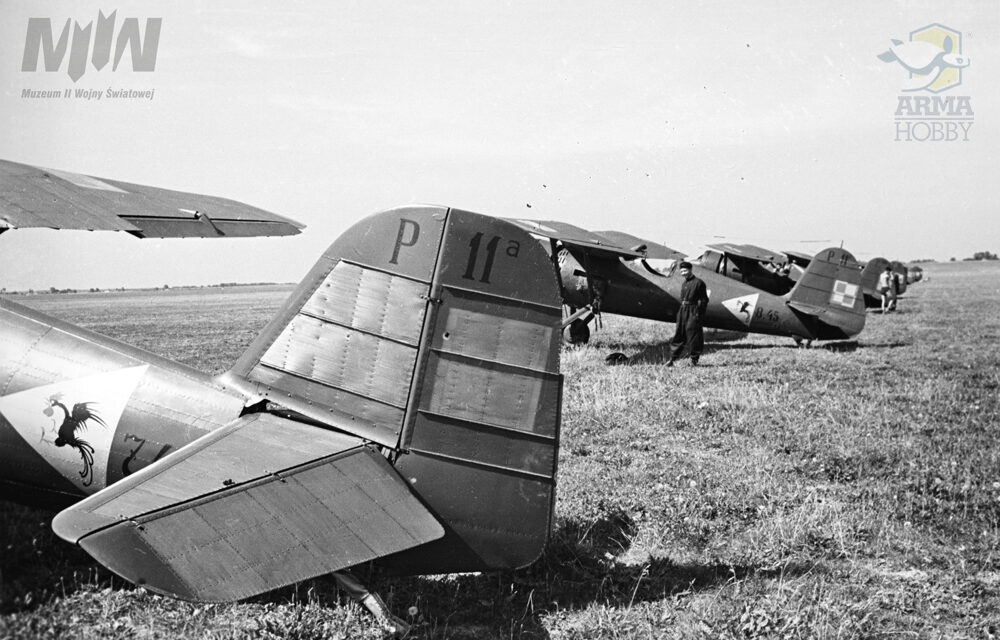


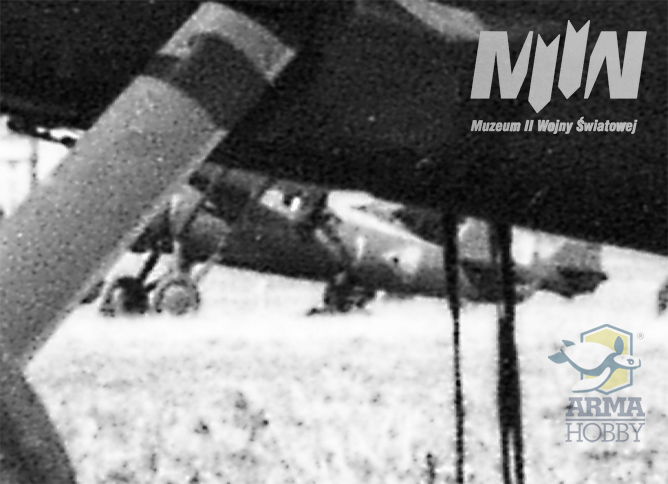

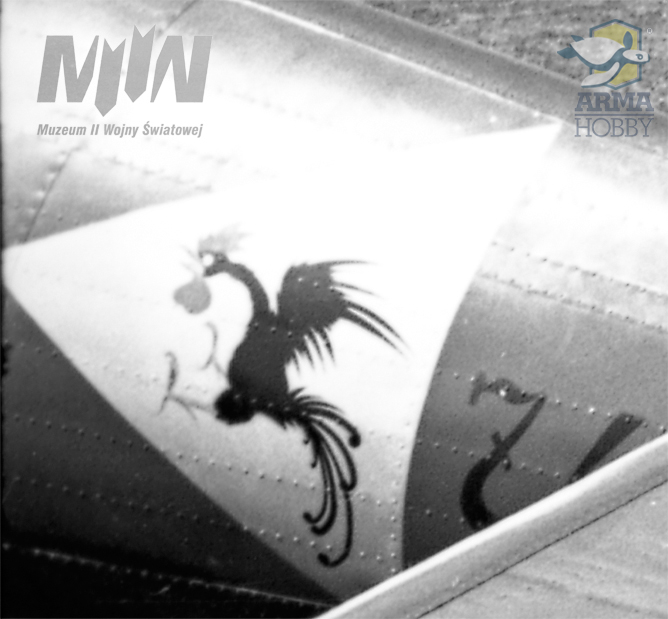



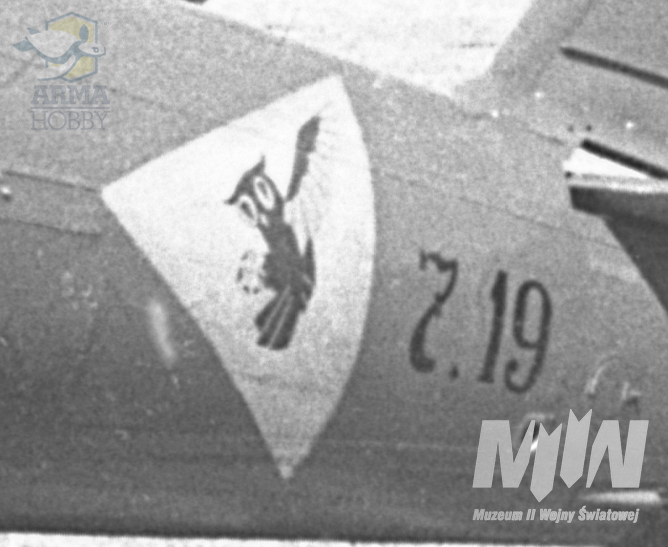





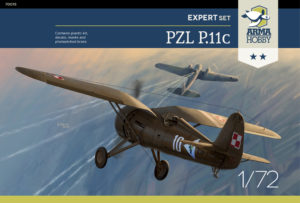

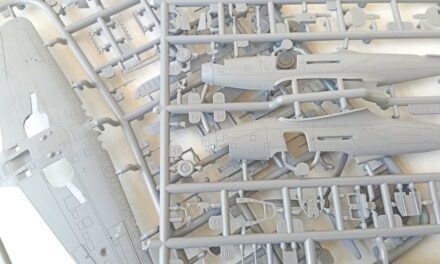
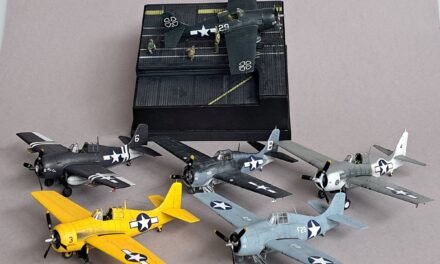

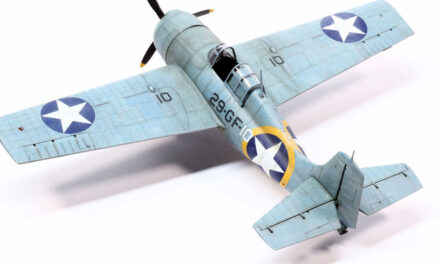
The PZL11 and Portugal Less-known facts On the beginning of the thirties, the Portuguese Arma da Aeronautica, the air component of the Army, lacked a credible air defence fighter, given that at the time it was still flying SPADs and Martinsyde Buzzards, of “Great War” lineage. A cahier de charges, contemplating the acquisition of a certain number of fighter aeroplanes of modern construction, was subsequently issued and presented to the different European aircraft makers. Among them the Polish firm PZL – Panstwowe Zaklady Lotnicze – proposed for the deal its brand-new P11 model. On the 23rd August 1932, flying directly from the Zurich International Meeting where it secured the second place on the “pure speed circuit” , the PZL P11/II prototype arrived in Portugal, piloted by Kazimierz Kuzian. Meanwhile and almost immediately Eng. Witold Rumbiwicz, PZL Director, joined his pilot in Lisbon travelling by train via Madrid. The test aeroplane, without camouflage, all the time with Polish insignias and the serial number 6-A, stayed for more than one year in Portugal where numerous sorties were flown both by Portuguese or Polish pilots. Unfortunately, and for despair of the Portuguese pilots that flew the aircraft and had only words of praise… Read more »